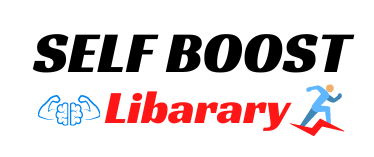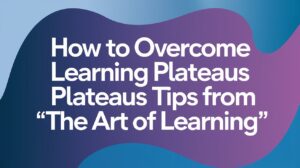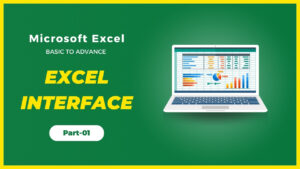Now, more than ever, financial freedom must be taken to heart. Whether you seek freedom from your 9 to 5 so you can leave the rat race or just want to live your best life—safe and secure—money will be key to making it a reality. One book that has changed the lives of countless people around the world seeking financial freedom is Robert T. Kiyosaki’s Rich Dad Poor Dad. The next blog post will be a deep insight into the book, discussing its core principles and lessons, and the impact the book may have on your financial mindset.
1. Rich Dad Poor Dad: Introduction
Rich Dad Poor Dad is not just a book on personal finance; it’s a real pioneer of changing the very conception about money. It was first published back in 1997, when it instantly reached the bestseller list and kept very influential to the given moment. The book is based on the personal life experiences of Kiyosaki and illustrates the financial philosophies that contrast his two “dads”: his real father, Poor Dad, and the father of his best friend, Rich Dad.
Poor Dad holds this view as most people would do, that is, a person needs a secure job, a good education, and should go toward financial security in a traditional way. On the other hand, Rich Dad provides another perspective: that entrepreneurship, financial education, and investing are the backbone of wealth.
He uses these two characters to compare people’s mindsets and behaviors towards money, finally presenting the mindset of his Rich Dad as a way to total financial freedom.
Grab your copy on Amazon today: Rich Dad Poor Dad
2. Primary Ideas of the Book
At the core of Rich Dad Poor Dad are a few fundamental ideas that stand in contradiction to traditional mainstream ideas about money and personal finance. Here are some of the most critical ideas:.
2.1. The Role of Financial Literacy
Central to Rich Dad Poor Dad is the theme of financial education. According to Kiyosaki, traditional schooling fails to give people the knowledge of handling their money. Most schools educating their students teach them how to become good employees but not how to be good businesspeople or investors. According to Kiyosaki, the base of financial freedom is financial education.
He preaches learning about things such as investing, real estate, and entrepreneurship, which could create the potential vehicles to generate then sustain wealth. Now think farther from working for money but having money work for you.
2.2. Assets vs. Liabilities
One important lesson that I gleaned from the book is the difference between an asset and a liability. Kiyosaki simplifies an asset to be something that puts money into your pocket, and a liability is what takes money out of your pocket. In doing so, he allows a reader to understand that acquiring assets while minimizing liabilities is very important.
For example, with respect to Kiyosaki, a personal residence is considered a liability because one must pay recurrent expense on it, whereas it is considered an asset for a rental house because it is making one money. The point is to stress building a portfolio of investments largely consisting of assets that make money with low effort involved, providing financial freedom.
2.3. The Rat Race
Kiyosaki first points out the concept of “rat race”-wherein that cycle a person works hard, makes money, and then spends the money on liabilities yet still ends up in the same monetary position every month. Far too many people find themselves caught in this cycle of living paycheck to paycheck, never really able to attain that elusive goal of financial freedom.
Rich Dad Poor Dad shows how a person can break the rat race and develop a mind shift in learning to create and own assets that generate income. Of course, this shift in focus is very important for one to be able to achieve financial independence.
2.4. The Power of Entrepreneurship
Another important principle found throughout the book relates to entrepreneurship. Kiyosaki feels that building one’s own business or investing in other activities can bring one much more gain than simply surrendering oneself to someone else’s work. It pulls people free from economic vulnerability, allowing them to be in control of their financial future and to create wealth on their own terms.
The book tells readers to look for an opportunity outside a regular job and to start a business or invest in real estate or whatever entrepreneurial venture. They will therefore have diversified streams of income so they can avoid their lives being tied to one source of income.
Grab your copy on Amazon today: Rich Dad Poor Dad
3. What Rich Dad Taught
Throughout the book, Kiyosaki imparts the wisdom of his Rich Dad and offers an immense amount of practical guidance on how to think of money and how to use it as a tool in building wealth. Let’s get considerably deep into each of these teachings.
3.1 Mindset Matters
The very first lesson from Rich Dad is concerning the importance of mindset in wealth. He taught Kiyosaki that the way people think about money goes a long way in determining their financial situation. While Poor Dad believed in job security and a steady paycheck, Rich Dad was all about creating multiple income streams and having assets to invest in.
The difference in mindset is key here. Rich Dad’s approach is all about taking risks, failing, and then picking oneself up again, with the constant search for opportunities to grow one’s wealth. He teaches Kiyosaki that it isn’t about how much money you make; it’s about how much you keep and how your money works for you.
3.2. The Importance of Risk-Taking
Rich Dad encourages Kiyosaki not to be afraid of taking a risk, especially in investments and business adventures. He said most people simply couldn’t be rich because they are scared to fail in matters of money; hence, they remain in this rat race. On the other hand, the one who can take a calculated risk and learn from his mistakes will most probably come out on top where financial concerns are a priority.
This lesson encompasses stepping out of one’s comfort zone and not being afraid of failure. Rich Dad says that failure is part of the learning process and that with each setback, there is a valuable lesson learned that may bring one to his or her success in the future.
3.3. Networking and Mentorship Become Very Important
Rich Dad further enlightens Kiyosaki on networking with and seeking mentors because he advises to have people around who are doing well financially so one can learn from them. This advice shows that financial education does not lie only in reading books or attending the courses; it lies in building connections around people who can mentor and guide.
It is by associating with such kinds of people in networking or searching for mentors who have actually made it to achieve financial success that one can gain very valuable insights and create an opportunity for new wealth.
Grab your copy on Amazon today: Rich Dad Poor Dad
4. Criticisms and Controversies
Rich Dad Poor Dad has faced criticisms and controversies all the same aside from mostly being praised for the insights into financial education and wealth building. It is worthy to consider these for a balanced review.

4.1. Lack of Concrete Financial Advice
The most common criticism against the book is that it has no concrete financial advice on how to do things. Even though Kiyosaki’s principles are very provocative and, in some instances, even push a person to change the direction in his or her relationship with money, many critics have said that the book is poor in its practical advice on how one would effectively go about implementing these ideas.
For example, while Kiyosaki is suggesting the involvement in assets like real estate, he seems to fall short of providing clear instructions on how to start investing or what to do first among them. This has made some people see his book as a motivational book rather than an instructional one.
4.2. The Risk of Oversimplification
Another point of criticism is the presentation of how the book oversimplifies some financial concepts. Kiyosaki’s definitions of an asset and a liability are easy to understand, but they do not reflect the reality and complexities that these two terms have from a practical point of view. Some financial professionals claim the way he presents can misguide people into oversimplifying or taking unnecessary risks in their financial decisions.
On the other hand, the emphasis on entrepreneurship and investing may not suit everybody. Not everybody has the right temperament, dismissible skills, or resources for the undertaking. Hence, some of the critics feel that the message of this book would make some of the readers take undue risks.
4.3. Questions on the Emergence of the Book
There has also been some controversy around the authenticity of the story presented in Rich Dad, Poor Dad. Some critics have questioned if Rich Dad really exists in reality or if he is just a fictional character created to illustrate Kiyosaki’s ideas. Though that doesn’t particularly detract from the value of the lessons, it certainly makes a statement about the narrative integrity of the book.
Kiyosaki has himself taken on these concerns and has clarified that it is a work of philosophy, not a strict autobiography and that the characters he has created represent the financial mindsets rather than people themselves.
Grab your copy on Amazon today: Rich Dad Poor Dad
5. Summary of the Influence and Impact of Rich Dad Poor Dad
Despite all these criticisms, there can be no denying the fact that Rich Dad Poor Dad has touched the lives of millions across the globe and has impacted them, as it has reportedly in changing their mindset about money and motivated them to take decisive action to control their financial future.

5.1. Inspiring a New Generation of Entrepreneurs
One of the most impactful influences that Rich Dad Poor Dad has had is on a new generation of entrepreneurs. It has inspired many people to start businesses and invest in real estate, among other means of creating wealth, because of its approach to financial education, risk-taking, and entrepreneurship.
Many entrepreneurs and investors consider that reading Rich Dad Poor Dad was an element that encouraged them to reach the goal of receiving financial independence. The simple language and understandable story of the book have popularized, to the majority of people, the clear financial objectives, so now the reader not merely realizes about them but also wants to act accordingly.
5.2. Popularizing Financial Education
Rich Dad Poor Dad has also played a significant role in moving financial education into the public domain. Before the book’s release, things like investing, real estate, and entrepreneurship were esoteric subjects that only a small few financial professionals regularly got involved with. but Kiyosaki’s writing is more approachable.
It has also inspired a multitude of financial education programs, seminars, and workshops aimed at empowering individuals to increase their financial literacy. This shift in focus has served to bring the concept of financial education to greater prominence and has made it easier for people to make better-informed decisions regarding their finances.
5.3. Shaping the Personal Finance Genre
Overall, the writing of Rich Dad Poor Dad had far-reaching effects on the personal finance book genre. The book triggered a wave of new books, blogs, podcasts, and other information sources on personal finance, financial independence, early retirement, and wealth-building strategies. So far, most of them are founded on the very principles Kiyosaki introduced, but they offer more depth in information and actionable advice on exactly how one could realize financial freedom.
No doubt, with the successful take-off of the book, a larger Rich Dad brand has been created. Now there is a series of different books, games, and educational materials all created to support people in their quest to gain finance success. This has simply solidified the place of Rich Dad Poor Dad as a cornerstone of modern-day financial education.
Grab your copy on Amazon today: Rich Dad Poor Dad
6. Lessons That Can Be Applied Today
Having said that, we’ve now reviewed the basic principles and taken a look at the effect of Rich Dad Poor Dad. It’s time to delve deeper and look for practical lessons we can extract and apply in our lives. Whether you are a starter, looking to take your finances to the next level, or seeking means to attain financial freedom, these lessons can guide you for life.
6.1 Start your financial education.
The first key to financial freedom is financial education. Read books, take classes, and learn how to invest in different strategies. Study real estate, stock markets, and entrepreneurship. The more knowledge you have in these things, the better prepared you will be when the time comes to face important financial decisions.
Try to leverage educational groups on facebook or other online systems to interact with like-minded individuals. These networks can help you brainstorm and support each other all the way to financial independence.
6.2. Focus on Asset Building
Building assets is considered by Kiyosaki to be the real bottom line of business. First of all, take an inventory of your current financial state and look at any such liabilities draining your financial life. Then, set out to find a chance where to get income-producing assets: rental properties, stocks, or businesses.
It’s important to start small and gradually build your portfolio over time. Don’t get discouraged if you can’t invest in large assets right away. Even small investments can grow significantly over time, especially if you reinvest your earnings.
6.3. Developing an Entrepreneurial Mindset
But entrepreneurial thinking will open up new ways that one can venture into more wealth creation, probably starting a side business or any other form of income generation. That diversifies the stream of income and minimizes dependence on any one source of income.
Remember, entrepreneurship isn’t all about business creation; it’s a way of thinking that inspires creativity, calculated risk-taking, and continued resourcefulness in finding ways to build wealth. Even if you don’t end up being a full-time entrepreneur, embracing this kind of mindset can help you approach your finances more strategically, too.
Read More: How Atomic Habits Can Help You Build Better Routines
6.4. Break Free from the Rat Race
Finally, it is in the attempt to break free from the rat race—living from paycheck to paycheck—and shift focus toward building more wealth over time. In order to make this possible, one needs to stress more on saving, investing, and financial education as a means to a more prosperous life for oneself and one’s family.
It all starts with clear financial goals and the means to achieve them. This usually involves cutting out those useless expenses, raising the ratio of saved money, or discovering resources of money-making. Put your eyes and effort on the future, not falling back on the previous life.
Grab your copy on Amazon today: Rich Dad Poor Dad
7. Conclusion: Is Rich Dad Poor Dad Right for You?
Rich Dad Poor Dad is more than a book. It elaborates on a financial philosophy that inspired everyone who had it to reprogram their minds on matters concerning money and wealth. It does not give one all the answers and exact steps to take, but in a way, it makes a difference in value terms in one’s thinking and realization of what can be possible.
If you are ready for a new outlook on personal finance and are open to challenging traditional thinking, Rich Dad Poor Dad is a good start. It urges you to take control of your financial destiny, be more imaginative as you think, and go for the opportunities to grow your wealth.
But still, you should approach it with some critical perspective and understand, in the back of your head, the areas of limitation that it canvasses. Use it only as a point of entry into financial education, but seek other investments and advice to pave your road to financial freedom.
In the end, Rich Dad Poor Dad is an excellent chisel with which to carve out your demarcation from the rat race to realize the financial independence that you have always longed for. Its lessons remain timeless; its impact is felt through and through by readers around the world. Whether you are experienced with investing or just beginning, this book can give you extremely valuable insights to help you achieve your financial goals.
So, are you ready to get started on your road to financial freedom? Go get a Rich Dad Poor Dad right now, and see for yourself how the changing of a mindset changes life.
This full-fledged review of Rich Dad Poor Dad by Robert T. Kiyosaki guides you deep into the principles of the book, its influence, and how to apply such lessons and change your life by attaining financial independence. Remember, the first step to making the journey to financial independence is just the first step, which may very well be as simple as reading a book that can impact your thinking on money.







1 thought on “What Makes Rich Dad Poor Dad a Must-Read Book?”